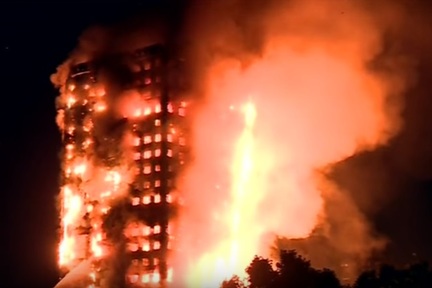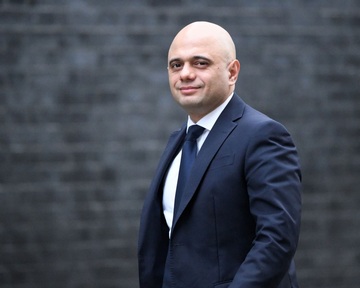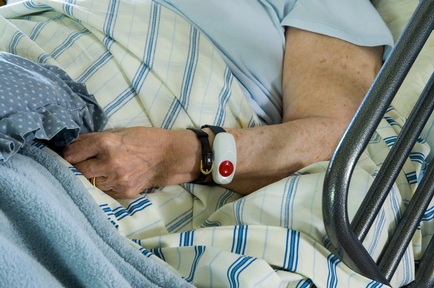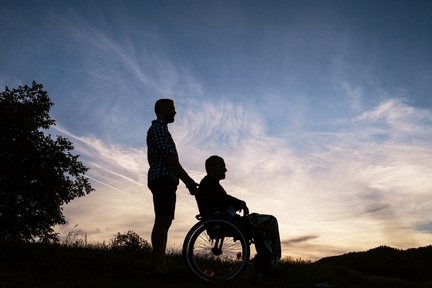Care homes told to review fire safety in light of Grenfell Tower blaze
England’s care watchdog, the Care Quality Commission (CQC) wants all care home providers to re-examine the fire safety checks that take place in care homes to avoid a loss of human life in a fire – as seen in the Grenfell Tower blaze.

In a letter sent out to care homes, hospices and independent hospitals, the CQC’s chief executive David Behan wrote: “I am sure you will be aware of the significant focus on fire safety following the terrible tragedy at Grenfell Tower in North Kensington on 14 June.
“As the regulator, our purpose is to ensure people receive safe, effective, compassionate and high-quality care and to encourage improvement.
“With recent events in mind, I am writing to ask that you review your fire safety processes in your registered premises to ensure they are up to date and are being applied consistently in practice. In particular, I ask you to pay attention to the size and fabric of your registered premises."
By 27 June, 95 buildings in 32 different local authorities had failed fire safety tests- after the Government urged councils and landlords to send samples of cladding to London for testing, in the days after the Grenfell Tower fire.
While the combustibility of the cladding used in the building hit headlines around the world prompting calls for other buildings around the UK to be checked, the lack of a sprinkler system, fire alarms, fire extinguishers and easy access for fire crews to enter the building were other factors that put lives at risk.
CQC inspections have identified fire safety issues
Reminding care home owners of their legal responsibilities, under both the Health and Social Care Act 2008 (Regulated Activities) Regulations 2014 and the Regulatory Reform (Fire Safety) Order 2005, to pay attention to the safety of the vulnerable and frail because of mobility issues or learning disabilities, the CQC’s letter went on: ‘We know from our inspections that there have been occasions when we have identified fire safety issues, some of which we have had to escalate to the local fire authorities.’
These issues have included blocked fire exits, fire doors wedged open, escape routes used as storage areas, low awareness among staff of what to do in emergency situations and no evidence of fire drills having been undertaken recently.
"We will continue to assess fire safety when we register and inspect providers, focusing on passive and active fire protection and on how fire safety is managed on a day to day basis."
Benefits of retrofitting sprinkler systems over cost
Sir David Behan’s letter included a link to the Department for Communities and Local Government on fire safety guides at: www.gov.uk/government/collections/fire-safety-law-and-guidance-documents-forbusiness.
One of the documents, approved by the Chief Fire Officers Association, called ‘Guidance on fire safety provisions for certain types of existing housing’ highlights the benefits of fire sprinkler systems.
Page 29 of the guidance reads: ‘Interest in the use of water suppression systems for domestic premises is growing in the UK. The use of these systems in the United States and other parts of the world has proved their value in saving lives and reducing damage caused to property by fire.
‘A water suppression system will detect, give warning, control, contain and often extinguish a fire. Historically, the main barrier to their installation has been cost. Whilst cost effective in new-build property or when installed during major refurbishment, the retro-fitting of water suppression systems in existing, occupied residential accommodation does need a considered cost/benefit analysis.
‘However, the wider benefits of suppression and the cost savings resulting from any design freedoms offered in respect of other fire safety measures may work in their favour.’
Increased staff costs or sprinkler systems
The company Nationwide Fire Sprinklers installed a sprinkler system in a care home in Leeds in 2007. In consultation with a fire officer, the care provider decided it would be safer to leave severely disabled occupants in place in the event of a fire and evacuate only away from areas directly involved with the incident. The fire officer agreed that the staffing levels, particularly at night, would make it impossible to evacuate all the occupants in a safe timescale.
As a result, left with a choice of increasing staffing levels to quickly evacuate or investing in sprinklers, in this case, it was found installing sprinklers would be quickly paid for by staff cost savings within three years.
In Scotland and Wales, all new and converted care homes have to have sprinkler systems. However in England, there is no such regulation. While some new purpose-built care homes may have sprinkler systems, many older care home buildings do not, despite the London Fire Brigade stating that sprinkler systems should be retro-fitted in care homes if they don't already exist.
120 accidental care home fires in London in 2016
There were 120 accidental care home fires in London in 2016, resulting in the London Fire Brigade being called out. As reported by carehome.co.uk, while a fire can break out in care homes, not all settings have sprinkler systems fitted to suppress a fire, prompting Rob McTaggart, a spokesman for London Fire Brigade to comment: "We want to see all residential care homes fitted with sprinklers.
“The number and regularity of care home fires that the Brigade attends is clear evidence that builders, developers, local authorities and private providers need to stop ignoring their benefits.”
Last May, before the Grenfell Tower Fire, carehome.co.uk contacted the CQC to ask the regulator about its stance on fire sprinkler systems in care homes.
At the time, a spokeswoman for the Care Quality Commission (CQC) told carehome.co.uk: “As the regulator, it wouldn’t be in our remit” to enforce or recommend sprinkler systems. Nor is it CQC’s responsibility to improve fire safety in care homes.
She said providers by law must "ensure they can demonstrate that premises and equipment are safe, properly maintained and used properly.
"For example, evidence that a care home has fire safety risk assessments, that equipment has been properly tested and appropriate staff fire safety training is in place."
Latest News Analysis
 04-Sep-19
Extra £1.5 billion announced for social care in Chancellor's Spending Review
04-Sep-19
Extra £1.5 billion announced for social care in Chancellor's Spending Review
 02-Jul-19
Department of Health forced to rethink care homes' nursing rates after legal challenge
02-Jul-19
Department of Health forced to rethink care homes' nursing rates after legal challenge
 18-Jun-19
Overnight care workers forced to sleep in offices and told 'bring your own bedding'
18-Jun-19
Overnight care workers forced to sleep in offices and told 'bring your own bedding'
 14-Jun-19
Back in the closet: Third of care home staff have had no LGBT+ awareness training
14-Jun-19
Back in the closet: Third of care home staff have had no LGBT+ awareness training
 11-Jun-19
PM candidates on social care: Rory Stewart calls fixing care an 'unfinished revolution'
11-Jun-19
PM candidates on social care: Rory Stewart calls fixing care an 'unfinished revolution'